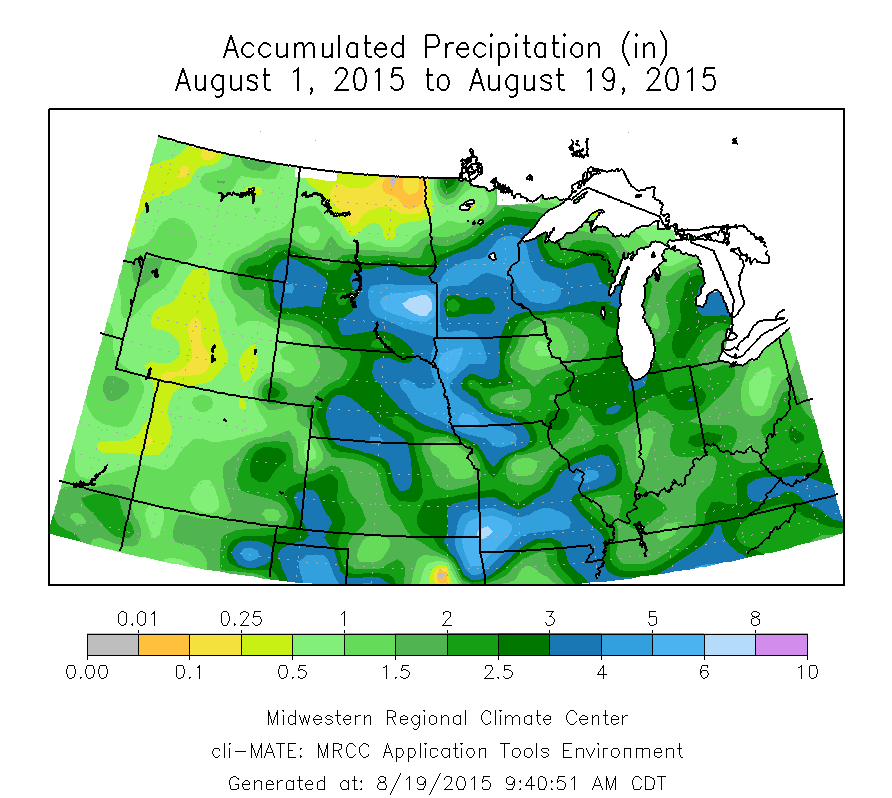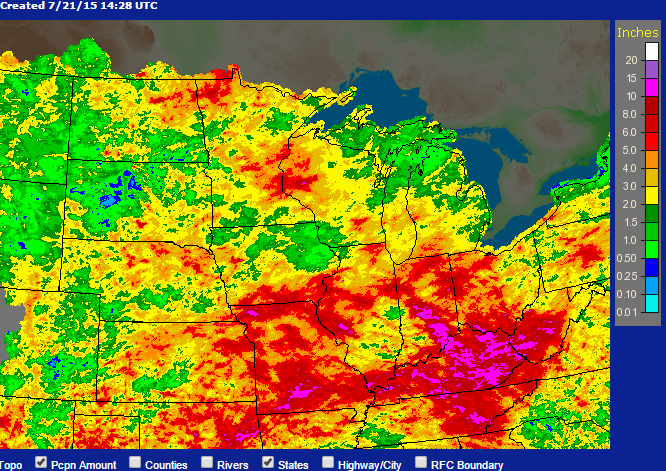Here is a snapshot of conditions across the Midwest for August. The first map shows the actual precipitation, the second the departures from average, and the third shows the temperature departures from average. Overall, the region has been wet with temperatures close to average for August.
For Illinois, the statewide average is 1.8 inches, which is about 20 percent below average. The heaviest amounts of 3 to 5 inches have been just east of St. Louis August. Meanwhile, widespread areas in Missouri, Iowa, Minnesota, Kansas, Nebraska, South Dakota, and Wisconsin, have reported 3 to 6 inches of rain. It has been less wet in the eastern Corn Belt.
Continue reading “Rainfall and Temperatures Across the Midwest in August”




